The Washington Senators uniforms were the traditional uniforms of the era. They were made of flannel.
Uniforms and Logos
Uniforms: 1961 - Present


With double knit-fabrics in vogue, the Rangers became the first Major League team to have never worn the old flannel fabrics. The Rangers nickname was derived from a historic tradition in the Texas and appeared on the chest of the home and away jerseys. The red, white and blue colored uniforms featured built-in waistbands and blue as the primary trim color. The cap was blue with a red-trimmed "T" on top of a red bill. Road uniforms were gray and blue-gray.

The first modification to the uniform came in 1975 when the name Texas in red, white and blue capital letters replaced Rangers on the front of the road uniform. The following year, the Texas was trimmed down to duplicate the upper and lower case style of Rangers on the home uniform along with a bicentennial patch. From 1977-1983, the jersey was changed to a pull-over with a couple of buttons at the throat.

There was a dramatic redesign on the jersey fronts during this season. On the home whites, the "Rangers" name was displayed in large blue capital letters and a version of the team's insignia was placed under the left breast. The road jersey was solid blue with white capital "Texas" across the chest with the same insignia.

This season brought another new look. The "Rangers" name was restyled in a slanted script for, blue with a red outline. The player's number was displayed on the front of the jersey for the first time in team history. It replaced the team insignia from 1983, which was made smaller and placed on the left sleeve. The two road jerseys were solid blue and solid red.

The Rangers used the same uniform as 1984, but at the end of 1985, the Rangers followed a trend of conservative and conventional uniforms to a plainer and cleaner "Dodger look" free of striped trim and a belted trouser.

The "Dodger look" retained the "Rangers" script lettering on the front of the home jersey, but dropped the number on the front and sleeve emblem. The road uniforms looked similar but all gray. The road jerseys featured "Texas" across the chest in blue block letters.

The Rangers were seeing red during this period. The uniform featured solid red hats, red belts, red stirrups and red pinstripes around the cuff of the sleeves on both the home and away jerseys. Red pin stripes were also included on the pants. Home jerseys were white with a red "Rangers" across the chest and away jerseys were all gray with "Texas" across the chest. Shoes were black or red.

The Rangers made a series of changes to the uniform. The road uniform was gray with blue piping on the sleeves and "Texas" in blue block lettering with red, white, and gray outline on the front of the jersey. Each player's name was in blue with red and white outline on the back of the jersey. The jersey had a button down front. An alternate navy blue jersey with "Texas" in red and white outline was also featured. The player's name on the back followed the same pattern. The road cap was solid blue with a red "T" outlined in blue and red with a red button on top. An alternate cap featured was solid blue with a red "T" outlined in blue and white with a red button on top. The uniform featured blue stirrups, belts, sleeves, battings helmets, and catching equipment with red accessories used at home.

The Rangers changed with blue replacing red as the dominant trim color. The home jersey features black trim for the first time. The Rangers' primary cap both home and road will be the blue cap with the white "T" that was introduced as the road cap for 2000. The Rangers' primary road uniform remains the same as in 2000 except that black trim has replaced the gray trim on the jersey front and number on the back. There was also no changes to the all-blue alternate jersey that was first introduced in 2000 and is used both home and away. The team also introduced a second alternate cap for 2001 that is blue with a black bill. This cap joins the all blue cap with a red "T" that first appeared in 2000. Both alternate caps can be worn home and away.


Logos: 1961 - Present

Washington Senators, 1961-1971: The first logo in the history of the franchise, this logo lasted for 10 years until the team departed for Texas in 1972. It features the Capitol building behind a pitcher throwing to the plate.

The first logo of the Texas Rangers. The logo features a large white cowboy hat on top of a baseball showing its seams to represent the state's history of cowboys and frontier. The "Texas Rangers" written in the middle of the baseball is also represents a "western feel".

The shape of the state of Texas along with a large "T" and "R" are distinct features of this logo. The baseball from the previous logo is present, but in the background and under the two dominant letters. The logo was also featured on the uniform jerseys.
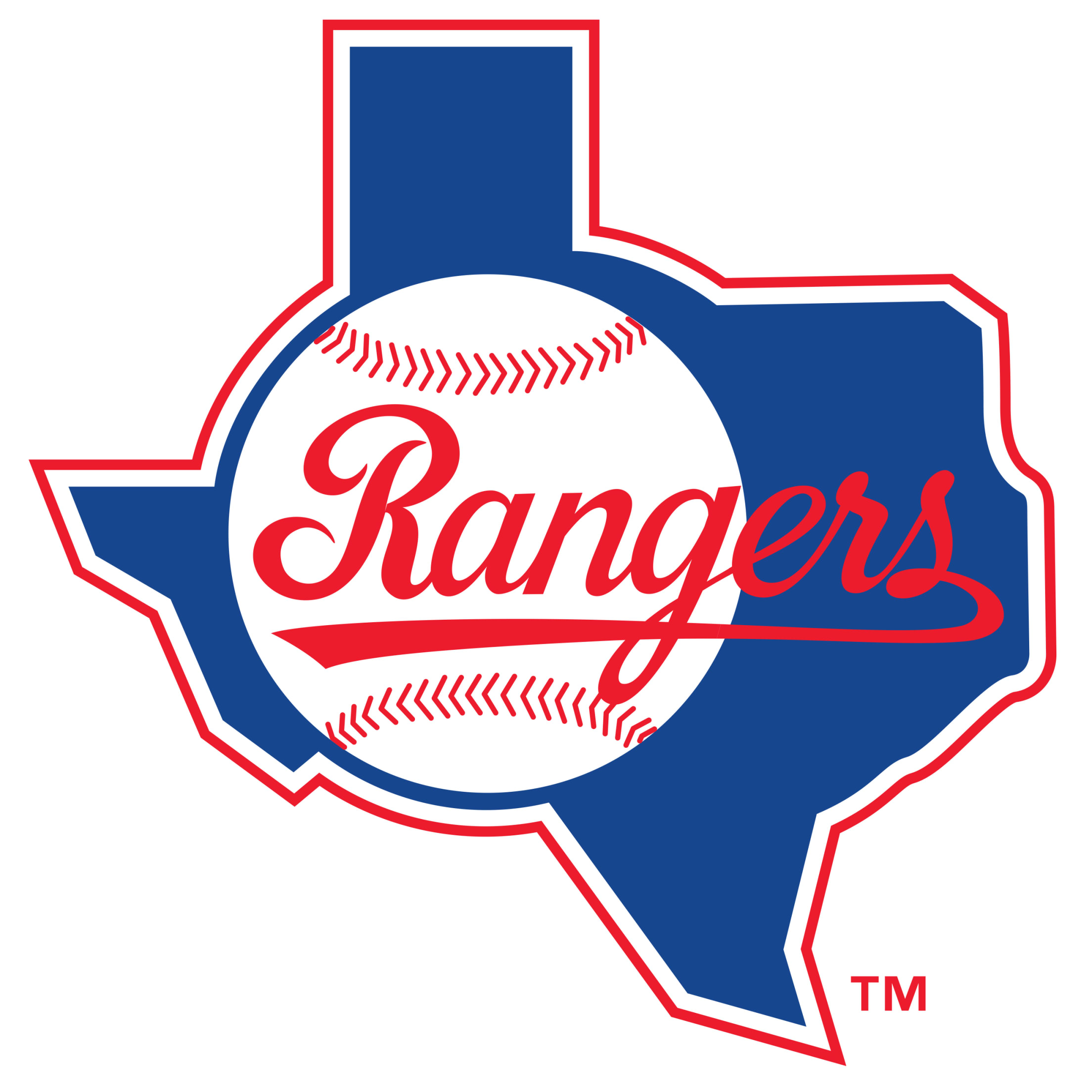
This logo also featured the outline of the state of Texas, but the large "T" and "R" were dropped. In its place, "Rangers" was written across the center in cursive. The baseball is also visible, but placed behind the "Rangers."
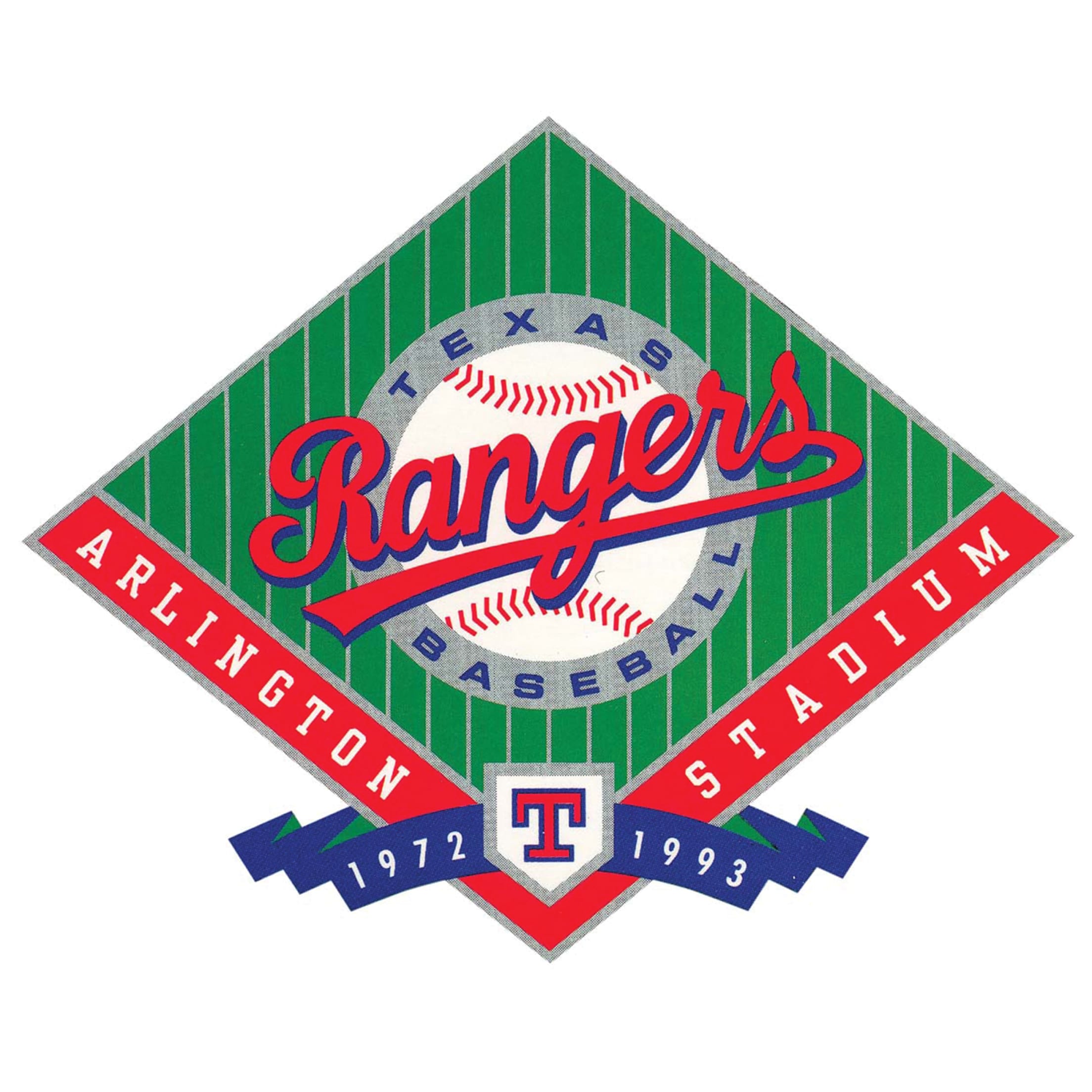
This logo honored Arlington Stadium, the Rangers' home field, in its last year of existence. The shape of the state of Texas was dropped and replaced by an elongated diamond with vertical pinstripes. Inside the diamond reads, "Arlington Stadium, 1972- 1993,"and "Texas Rangers Baseball." Several shapes gave it a more modern look.
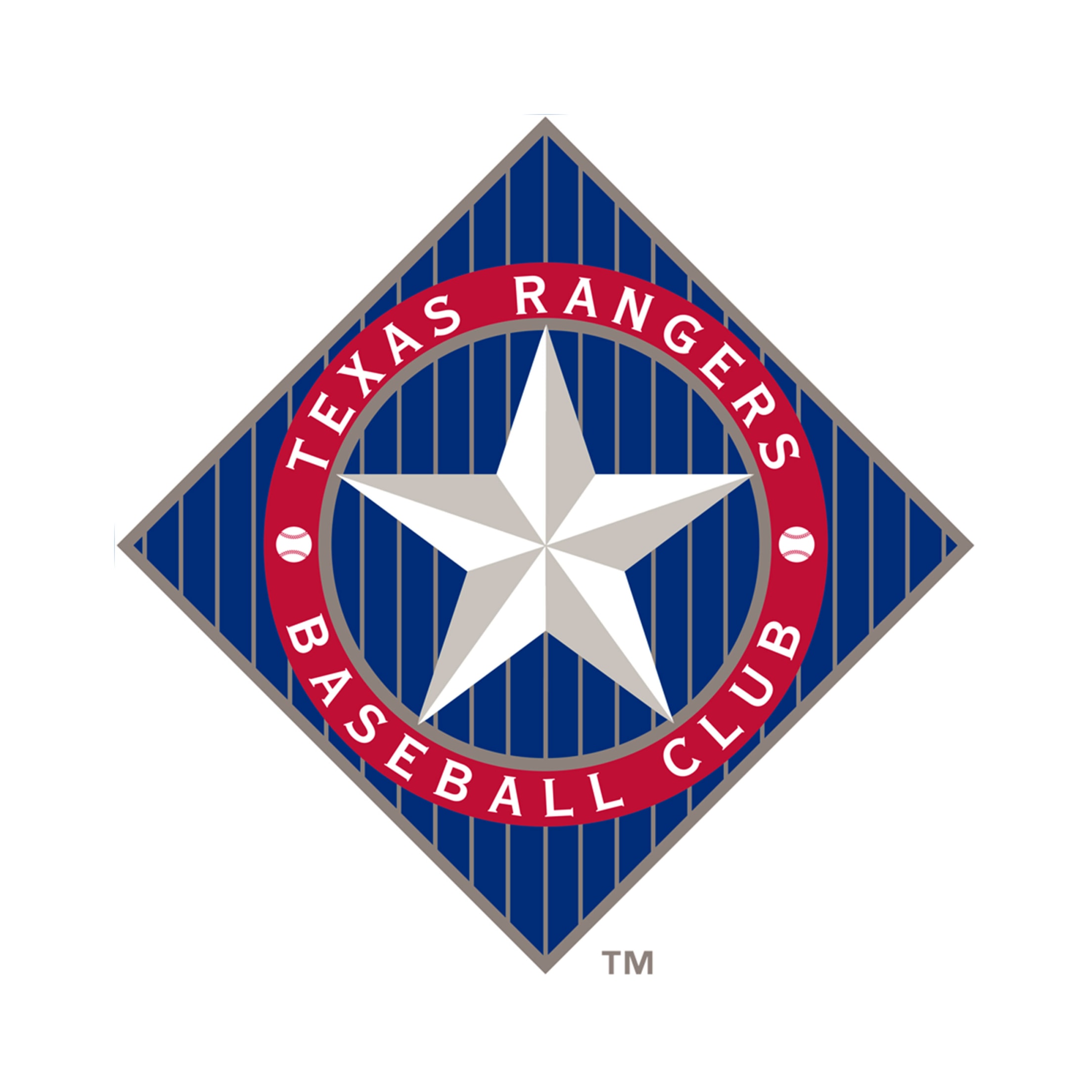
This logo is diamond-shaped and also has vertical pinstripes. A large star representing Texas, the Lone Star State, is the dominant feature of this logo.
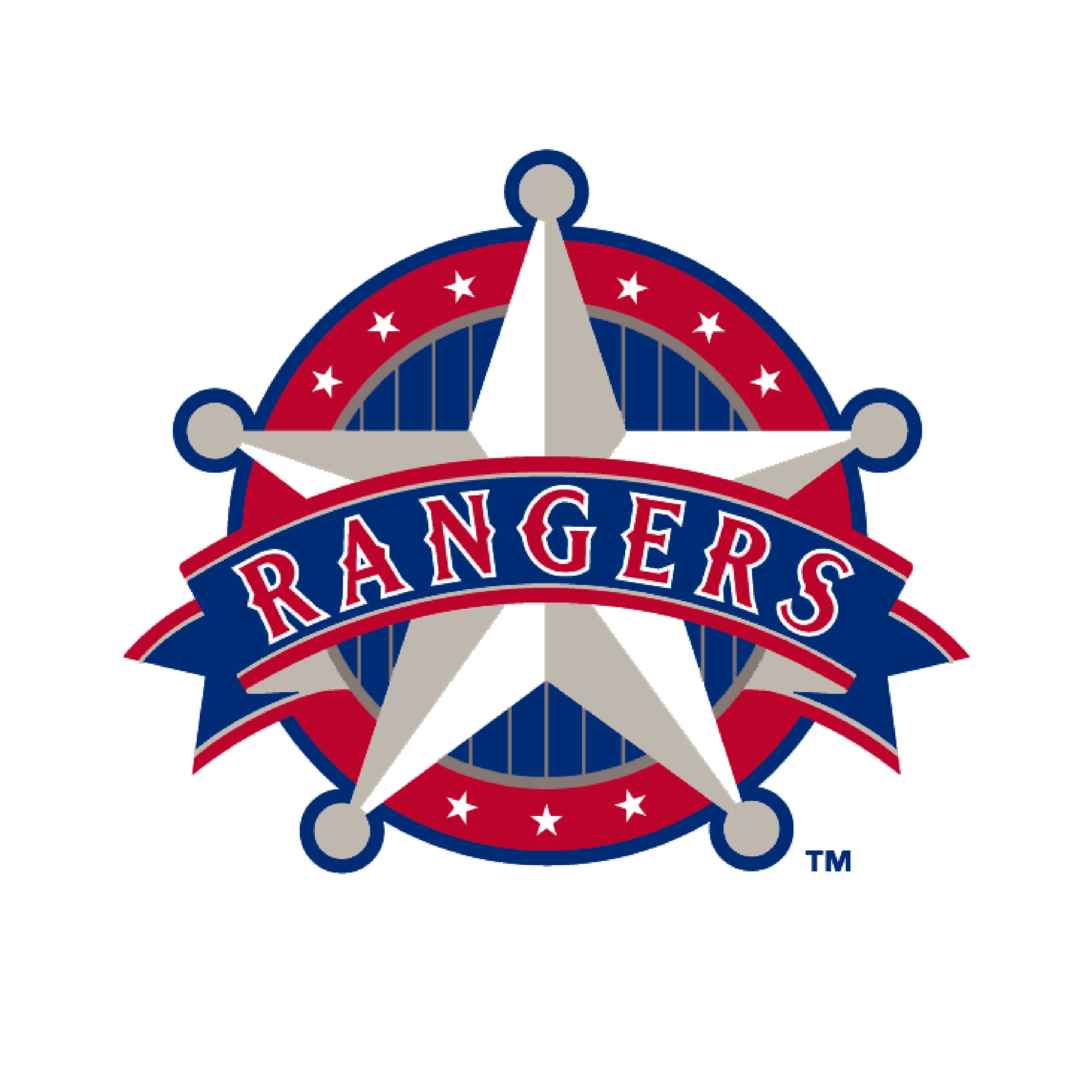
Officially the secondary logo from 1994-2002, this logo became the primary logo from 1998-2002. The logo maintained the vertical pinstripes from the previous logo while making the star larger. This version also kept the red circle surrounding the logo, however, Texas Rangers Baseball Club was replaced by Rangers in the banner across the star.
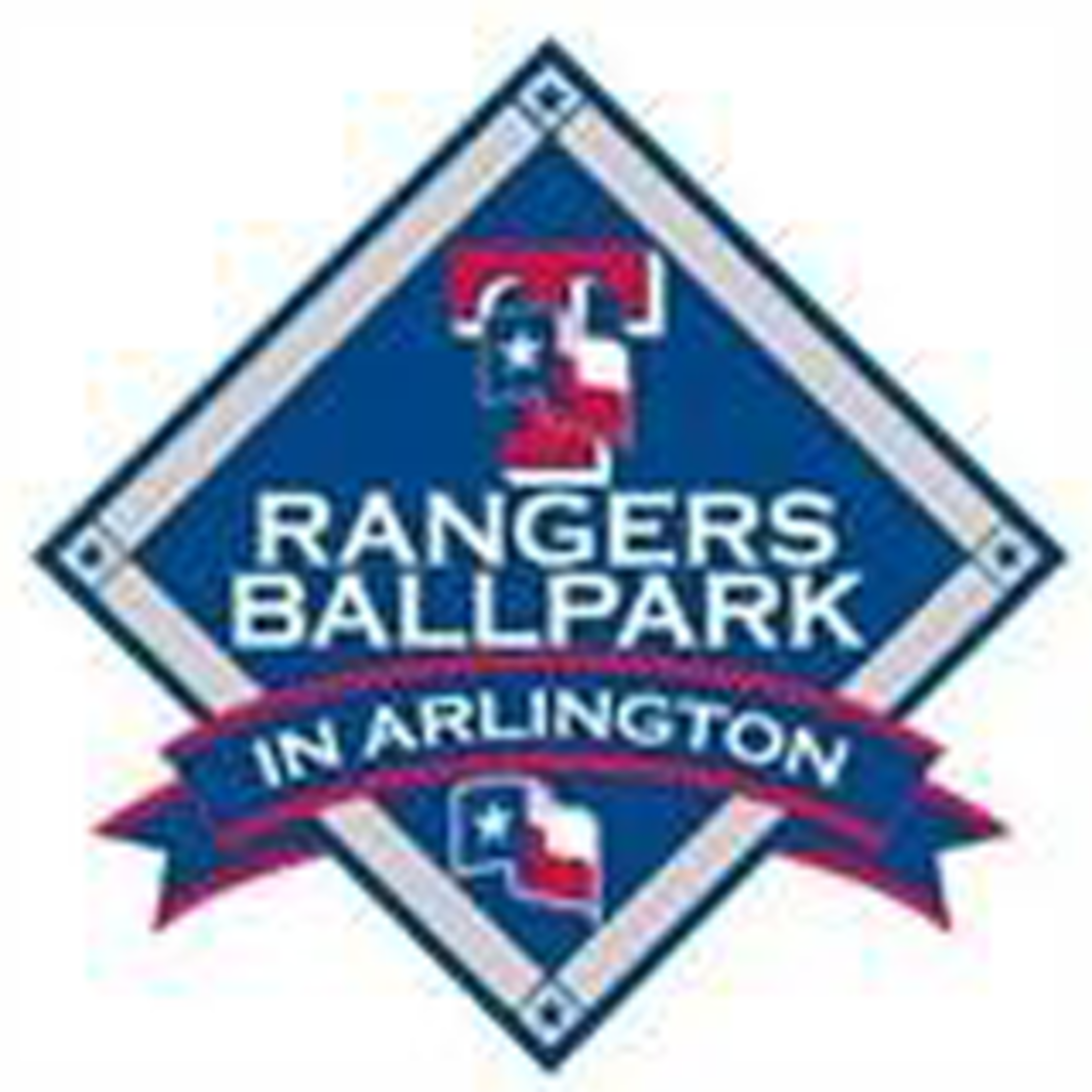
Ballpark logo from 2007-09
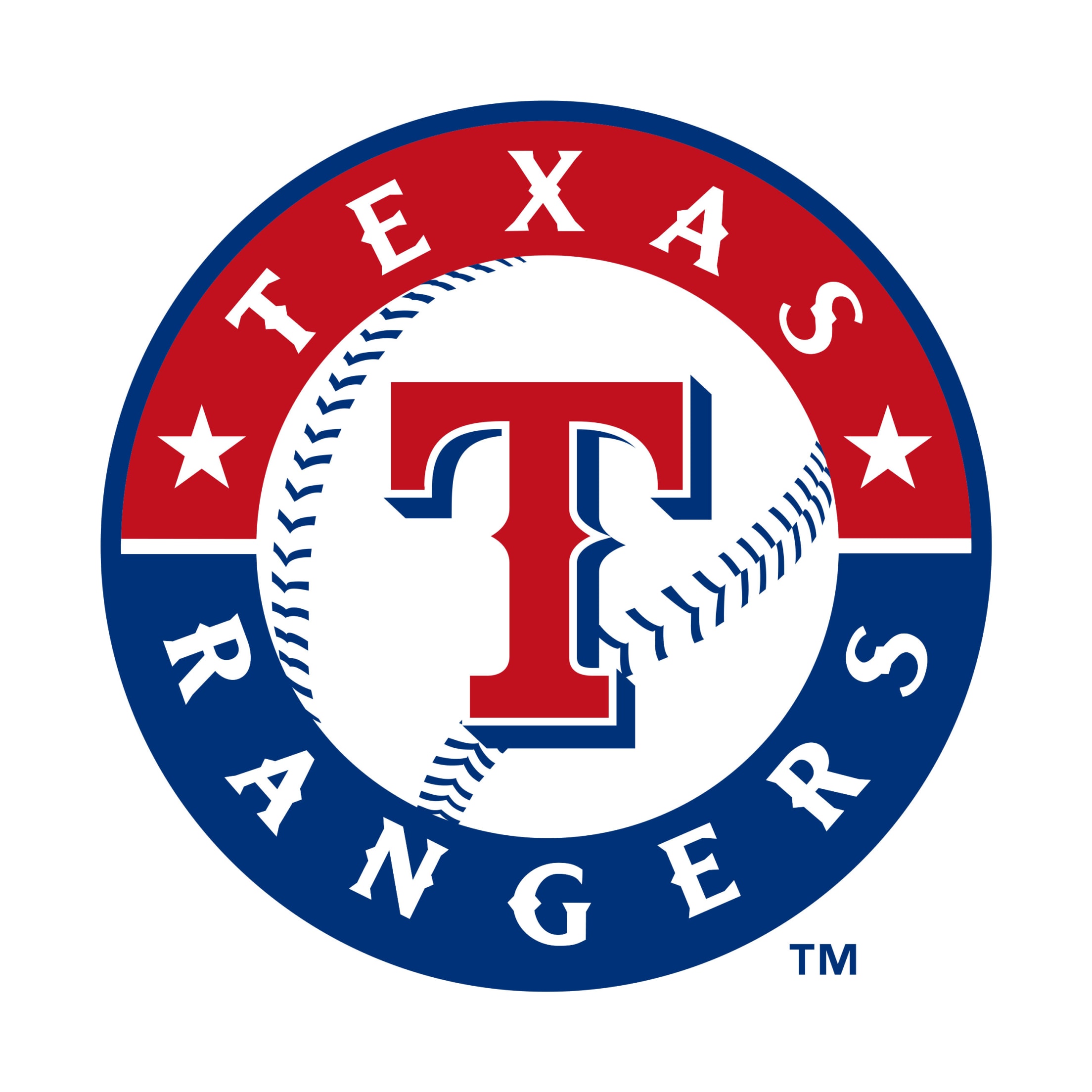
The new primary logo is red and blue and contains a baseball inlaid in a circle. "TEXAS RANGERS" encloses the baseball, which contains the team's script "T". It marks the first time that the Rangers have ever featured a totally round logo, and it is the team's sixth primary logo since the franchise relocated in Texas for 1972.